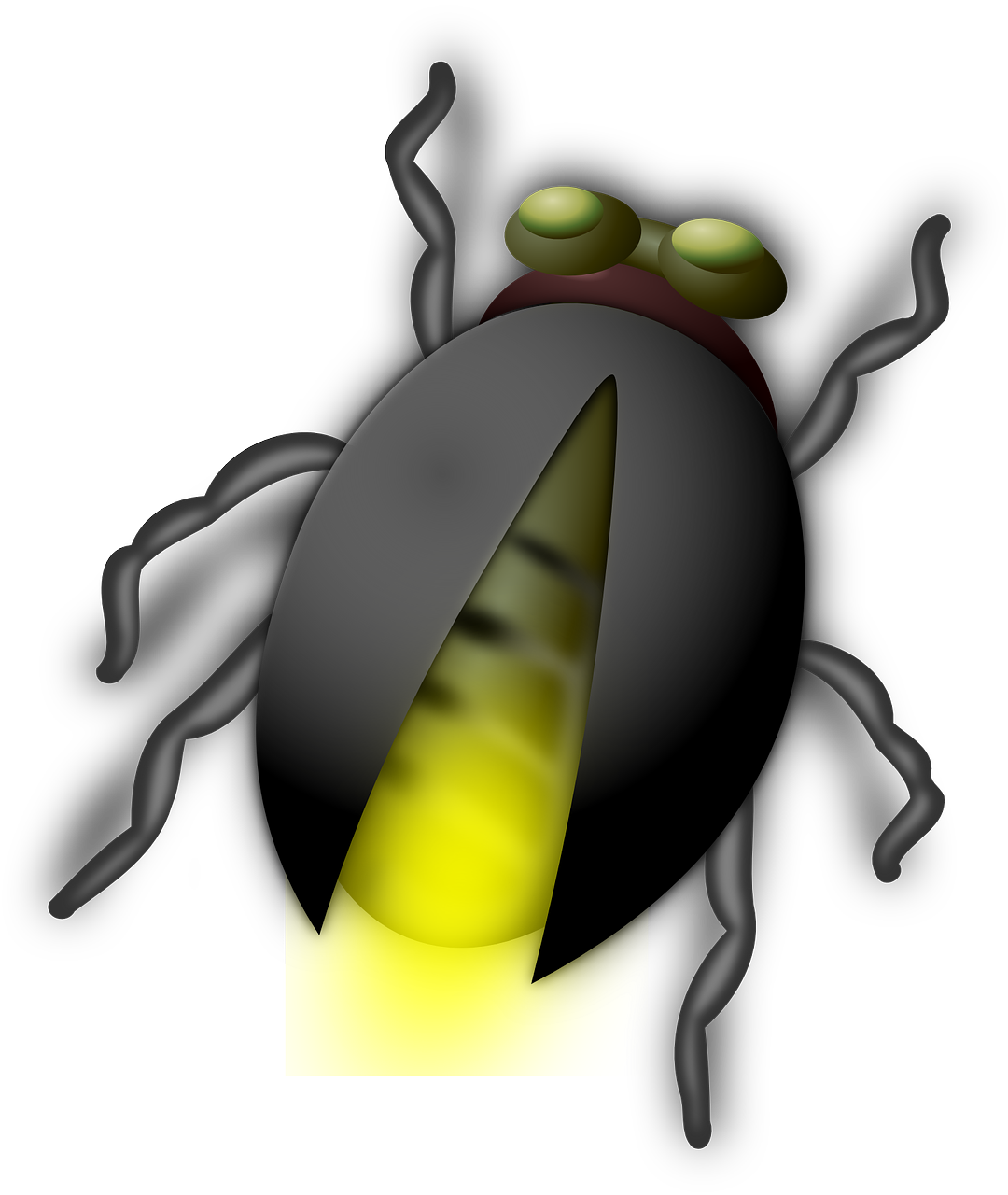Step 1
Cut two pieces of wire, one twice the length of the other.
Step 2
The plastic coating at each end of both wires needs to be removed using a pair of scissors (roughly the width of a finger from each end).
Step 3
One of the now exposed ends of the longer wire is attached to the negative (-) end of the battery using electrical tape. This wire is also taped along the side of the battery to keep it in place.
Step 4
One end of the short wire is wrapped around the metallic base of the bulb.
Step 5
The bulb is placed against the (+) end of the battery and surrounded by poster tack to ensure it stays in place.
Step 6
Each exposed wire end is covered with a ball of foil.
Step 7
Coloured paper is cut the length and width of the battery and is wrapped around the latter. The paper is kept in place using transparent tape.
Step 8
A pair of identical wing shapes are drawn on the 30pt coloured paper and are cut. These are attached to the upper side of the battery using a glue stick
Step 9
A pair of identical wing shapes are drawn on the 30pt coloured paper and are cut. These are attached to the upper side of the battery using a glue stick
Step 10
A pair of wiggly eyes are attached to the poster tack using glue on the upper side of the battery.
Step 11
Different materials are brought into contact with the foil-covered wire ends. If the lightbulb lights up the material is conductive.
For a more attractive look, two light bulbs can be used so that now the insects have glowing antenna instead of a glowing nose. You can conduct this experiment with other design variations.
Clamp a watch battery using a wooden peg. In this case, the setup of the circuit stays the same and the peg can be decorated.
- Care must be taken when handling the scissors.
- Make sure that electrical sockets and appliances are not tested with the wires as these are directly linked to main power lines.
https://www.ccohs.ca/oshanswers/safety_haz/electrical.html - Ensure that the experiment is conducted in dry conditions as water causes electrical circuits to short circuit and may cause sparking.
http://sce.e-smartonline.net/elec_safety-smart/electricity_can_hurt/water.html - If non-rechargeable batteries are used they will eventually die out and thus their safe disposal in appropriate sites is encouraged.
- Rechargeable batteries may be used however for charging to occur the setup must be dismantled.
After setting up the experiment but prior to testing a material :
Imagine that the battery is full of people ready to run a race. You run a race in one direction and the track are the wires attached to the battery. Right now, there is a hole in the track which the runners cannot get past, this is the gap between the foil balls. The runners must find a way to cross this gap, only then will the light bulb switch on so we have to make a way through. But what will we make it of?
After testing a conducting material:
Conducting materials acts like a sort of bridge that the runners can run across with no problems. Since the conductor allows these people to continuously run along the wire tract the light bulb lights up.
After Testing a non-conducting material:
Look what happened now. We still filled the gap between the two foil edges, but instead of building a bridge across which the runners can run across, we filled the space with an extremely deep lake. You can’t run across a lake and there are no boats in sight so the runners cannot continue along the path and so the light bulb does not light up.
Instead of runner you may also use horses, chariots, dogs, cars any form of organism/machinery that is typically associated with races.
Why are the ends covered in foil?
Foil is conductive and won’t interfere while testing other materials.
Why doesn’t the light bulb light up without the conductive material?
Because there is a gap in the circuit.
Before demonstrating the material: Do you think this is a conductor or non-conductor?
Explain accordingly
In which direction is the current (the runners) moving ?
Conventional current: flow from the cathode (+) to the anode (-).
Electronic Current: This is the actual current in which the flow of electricity is from the anode (-) to the cathode (+). This is because negative electrons produce the electrical charge and these travel towards the positive terminal.
Why was the plastic coating removed from the wire?/strong>
Plastic is non-conductive. Electricity can’t be conducted through it.
A circuit must be closed for electricity to flow. The battery is a source of voltage, which push around electrons, found in the battery and in the wire of the circuit (current), Current can also be conducted through most metals (these are good conductors). It is because of this that aluminium foil and copper wires are used. Plastics on the other hand are insulators, hence explaining the plastic covering found around wires.

As can be seen in the diagram above in closed circuit electricity flows from the battery through the wire and lighting up the bulb as the current flows through it. The current travels in a ‘- to ‘+’ direction. By touching the aluminium balls to a conductor the previously open setup becomes closed allowing electrical flow to occur. This is a circuit.
When the aluminium balls aren’t touching anything or an insulator, a current is unable to be generated thus preventing electrical flow.
The Battery :
A battery is a device that is capable of storing electrical energy in the form of chemical energy. This transduction causes the conversion of energy into electricity. This battery (cell) is composed of 3 main components: A negative (cathode) and positive (anode) terminal and an electrolyte. The cathode is the source of the voltage that pushes the electrons towards the anodes.
The terminals are commonly made of different metals whilst the electrolyte acts to separate these terminals. The latter is an electrical medium through which the flow of electrical charge is allowed to occur between the terminals. When the cell is connected to a circuit, a chemical reaction takes place at the electrode terminals that creates a flow of electrical energy to pass through the circuit.
During electrical discharge the metal at the cathode terminal releases electrons. Ions in the electrolyte medium undergo an oxidation reaction allowing for electron transfer. The anode then accepts the electrons, completing the circuit and permitting the flow of electrons to continue. It is important to note that during this time two processes are occurring simultaneously:
Electron flow through the external circuit (electrical current)
Transport of ions across the electrolyte.
Conductors and Insulators:
The main difference between the two is that conductors are capable of allowing electron transfer within its atomic structure, while insulators prevent such electrical transfer. Most metals (and graphites) are conductors in the solid-state, while non-metals, covalent compounds and solid ionic compounds, are non-conductors of electrical currents.
Metals and graphite are capable of conducting an electrical current as their atoms possess relatively free outer electrons. These electrons form a cloud of electrons and are not tied to a single atom, thus because of this freedom electrons are capable of moving freely within the metal structures in the direction that an electrical current is applied.
Within insulators, no such free outer electrons are present. Since they lack this cloud of electrons, when an electrical current is applied, electrons are not free to flow across the substance, preventing current flow and are said to be non-conductive.
When dealing with conductors in the liquid state, the only elements that are conductive are metals, as well as aqueous solutions possessing ionic substances. Covalent liquids such as water, propane and alcohol are non-conductors. The reason why molten metals are capable of conducting an electrical charge is due to the presence of free outer electrons. Ionic solutions are able to conduct electricity as they are composed of charged particles (both negative and positive ions). When in the solid-state, they are bound in a solid lattice whereby the electrons are unable to conduct an electrical current. In solution or when melted, the outer electrons are free and thus allow the passage of an electrical current.
(http://www.bbc.co.uk/bitesize/standard/chemistry/propertiesofsubstances/conduction/revision/1/)
Applications
Conductors and insulators have been thoroughly studied over the years, and have been extended past just electrical conductivity but also the transfer of other forms of energy such as thermal energy. Applications of conductors and non-conductors are used on a daily basis for a number of electrical appliances and devices as well as to ensure safety during their use.
http://www.bbc.co.uk/education/guides/z77ycdm/revision
Research
Circuits and currents are essential in studies concerning particle acceleration. Cern’s Large Hadron Collider is one such example. It makes use of a number circuits to influence particle velocity and thus affecting the energy at which such particles collide. It is through particle collision that scientists learnt of the existence of the Higgs Boson and Tetraquarks.
https://accelconf.web.cern.ch/accelconf/e02/PAPERS/MOPDO014.pdf
Graphene is a single atomic layer of carbon and is being considered a revolutionary discovery in electrical sciences as it is significantly more conductive than those previously discovered and utilized. However, apart from graphene’s high conductivity it also possesses high mechanical strength further expanding the utilization of such a material in the future.
https://www.graphenea.com/pages/graphene-properties#.WMzcrTvxZlI
http://www.explainthatstuff.com/graphene.html
- Use ropes/threads/elastics instead of wires to see if a circuit is still produced when the wires are absent.
- Change the battery type used and see if this affects the brightness of the bulb when lit (it should) or the material classified as conductors/insulators (it shouldn’t).



